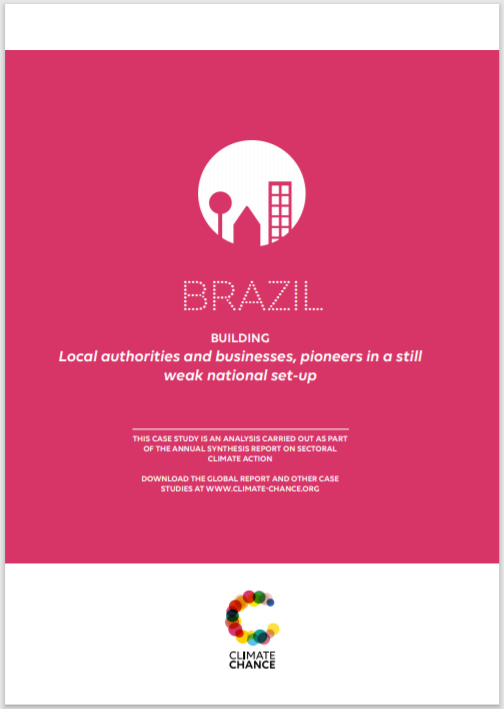Brazil • Building : Local authorities and businesses, pioneers in a still weak national set-up
Brazil is one of the most densely populated countries, behind Japan, with the highest rate of urbanization : 86% of its 209 million inhabitants live in cities. What does this urbanization imply when compared to the challenges of reducing greenhouse gas emissions? The building sector plays a key role ....

Contents
- Drop in emissions once the electricity mix back to normal
- A national framework with few restrictions but with the potential for savings
- Local authorities focus on tax incentives for sustainable buildings
- Brazil, one of the biggest markets for sustainable building certification
Key takeaways
- GHG emissions from the Brazilian residential sector dropped by 20% from 2014 to 2018, down to 2010 levels. This decrease is mainly due to the significant share of hydropower in the electricity mix and an economic crisis starting from 2014 that greatly reduced energy demand.
- The national energy-saving framework for buildings, which gains strength with every crisis, has since the 1980s corresponded to energy security considerations more than ecological concerns. The PROCEL label for equipment and the consumption thresholds established by the 2001 Act have led to savings of 21.2 TWh. The “PBE Edifica” labeling program in place since 2010 concerns all private and public buildings, but is only obligatory for federal buildings.
- Electricity consumption in the residential sector due to air conditioning tripled from 2005 to 2017, impacted by architectural standards ill-adapted to the different regional climates in Brazil. Air conditioning is likely to represent 20% of electricity demand by 2050.
- Brazilian local authorities have proved to be particularly enterprising and connected to international networks. The main lever is a property tax deduction for buildings certified as sustainable, ranging from 4% to 20% depending on the city and region, and on the criteria applicable. Cities like Recife apply a tool to regulate green roofs and self-supply.
- Brazil is one of the biggest global markets for sustainable building certification with over 1,000 LEED or AQUA-HQE certified buildings; nevertheless, their standards are relatively ill-adapted to regional climates, materials, and traditional Brazilian construction techniques.


